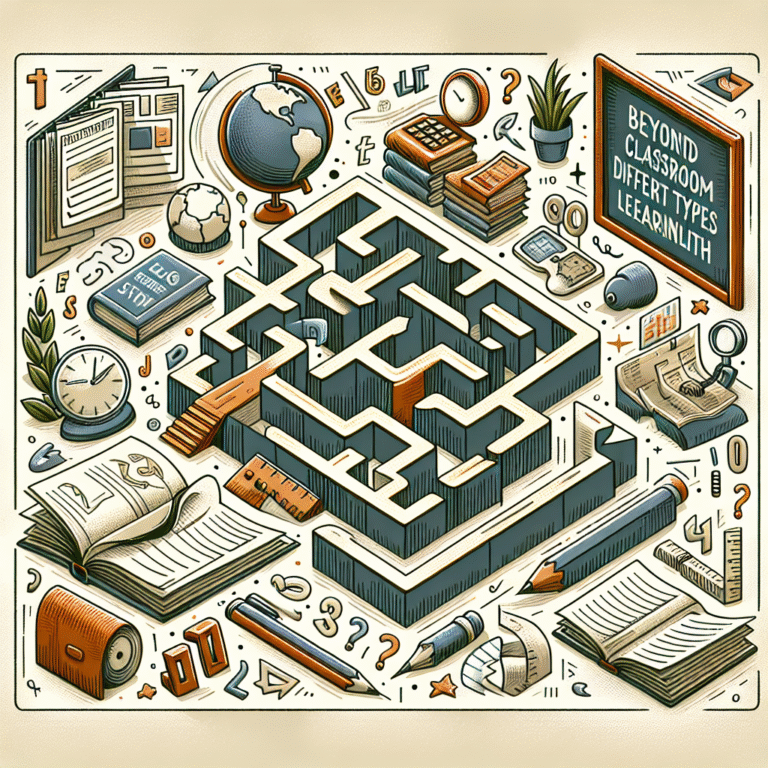
Planning for Success: Essential Time Management Skills for Individuals with Learning Disabilities
Introduction
Imagine you’re trying to navigate a bustling city without a map or GPS. Each turn seems daunting, and you frequently feel lost. For many individuals with learning disabilities, time management can feel just like that—overwhelming and confusing. Planning for Success: Time Management Skills for Individuals with Learning Disabilities isn’t just about organizing hours; it’s about empowering individuals to take control of their lives and achieve their goals. In today’s fast-paced world, mastering time management skills is not merely beneficial—it’s essential.
The Importance of Time Management in Learning Disabilities
Time management plays a crucial role in academic success, professional achievement, and everyday life, particularly for individuals with learning disabilities. Learning disabilities may affect how someone processes information, understands instructions, and manages tasks. Therefore, developing robust time management skills is vital not only for academic performance but also for self-confidence and independence.
The Challenge: Understanding Learning Disabilities
Learning disabilities, which include dyslexia, ADHD, and others, manifest differently for each individual. This uniqueness implies that there’s no one-size-fits-all solution. Individuals may struggle:
- With retaining information.
- With multi-step tasks.
- With prioritizing and organizing tasks.
Understanding these challenges is the first step to creating an effective time management strategy.
Effective Time Management Strategies
1. Establishing Realistic Goals
The foundation of Planning for Success: Time Management Skills for Individuals with Learning Disabilities begins with setting realistic and achievable goals.
Case Study: Sarah’s Academic Journey
Sarah, a high school junior with ADHD, often found herself overwhelmed by her assignments. After working with her teacher, she learned to break down her larger projects into smaller, manageable goals. This shift not only improved her grades but also increased her confidence.
Analysis: Sarah’s story emphasizes the importance of goal-setting, which enables individuals to see the progress they’re making, thus reducing anxiety.
2. Creating a Structured Environment
A structured environment can drastically simplify the time management process.
- Organizational Tools:
- Calendars (digital or paper)
- Color-coded folders
- Visual timers
Using tools that provide a clear layout helps individuals visualize their day-to-day activities, aiding in prioritization.
3. Utilizing Visual Aids
Visual aids are powerful tools for individuals with learning disabilities.
- Charts: Show daily, weekly, and monthly tasks.
- Diagrams: Illustrate complex procedures or multi-step projects.
Table: Example of a Weekly Planner for Time Management
| Day | Task | Estimated Time | Status |
|---|---|---|---|
| Mon | Math Homework | 1 hour | Not Started |
| Tue | Science Project (Research) | 2 hours | In Progress |
| Wed | English Essay Draft | 1.5 hours | Completed |
| Thu | Read Chapter for History | 45 minutes | Not Started |
| Fri | Review for Upcoming Test | 2 hours | Not Started |
Analysis: This structured approach allows individuals to visualize their workload and track progress, making it easier to stay on top of tasks.
4. Time Blocking
Time blocking involves allocating specific chunks of time for different tasks, which can significantly enhance focus and productivity.
Case Study: Tom’s Focus Improvement
Tom, a college student with dyscalculia, struggled with time management during his studies. By adopting time-blocking techniques, he devoted specific hours to subjects that needed more attention. As a result, Tom increased his focus and improved his academic performance.
Analysis: Tom’s success illustrates how structured time allocation can assist individuals in leveraging their strengths while mitigating their weaknesses.
5. Implementing Breaks
Regular breaks can rejuvenate the mind and improve retention while reducing feelings of burnout.
- Strategies:
- Use the Pomodoro Technique (25 minutes of focused work followed by a 5-minute break).
- Engage in a brief physical activity to reset the mind.
6. Seeking Support and Accountability
Having a support system can bolster time management efforts.
- Support Groups: Joining groups for individuals with learning disabilities can provide moral support and shared strategies.
- Mentors: Access to mentors can equip individuals with insights gained from experience.
The Benefits of Time Management
Prioritizing Planning for Success: Time Management Skills for Individuals with Learning Disabilities can yield significant benefits:
Enhanced Self-Esteem
Success in managing time fosters a sense of achievement, which boosts self-esteem and confidence.
Improved Academic Performance
Students who adopt effective time management strategies typically see marked improvements in their grades.
Greater Independence
Learning to manage time effectively allows individuals with learning disabilities to take ownership of their responsibilities, leading to greater independence.
Conclusion
Mastering time management is a transformative journey for individuals with learning disabilities. It paves the way for academic and personal success while nurturing independence. By adopting realistic goal-setting strategies, structured environments, and supportive networks, individuals can significantly improve their time management skills.
Remember, Planning for Success: Time Management Skills for Individuals with Learning Disabilities is not merely about managing hours—it’s about transforming lives. Embrace the process with patience, celebrate your victories, no matter how small, and keep pushing towards your goals.
FAQs
1. What are some simple time management tools I can use?
Common tools include planners (digital or paper), calendar apps like Google Calendar, and time-tracking applications.
2. How can I develop a routine that helps with time management?
Start with small, consistent habits. Gradually incorporate more elements into your routine, keeping it aligned with your goals and lifestyle.
3. What if I struggle to stick to my time management plan?
It’s important to remember that flexibility is key. Assess and tweak your strategies as needed to find what works best for you.
4. Are there specific time management strategies for different learning disabilities?
Yes, tailor your approach based on individual needs and preferences. For example, students with ADHD may benefit greatly from visual aids and structured environments.
5. How can I find support for learning time management skills?
Seek resources like school counselors, special education teachers, or community programs dedicated to supporting individuals with learning disabilities.
By weaving together personal experiences, actionable strategies, and structured guidance, this article aims to not only inform but also inspire individuals facing the challenges of learning disabilities to embark on their journey toward effective time management.






